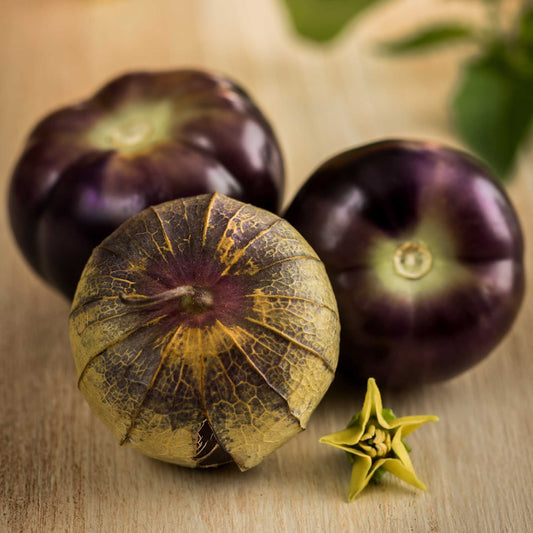-
main-collection-product-grid

Tomatillo Seeds - Pineapple
Flavor your chutney, salsas and sauces with a tropical, citrus touchTomatillo Seeds - Pineapple
Flavor your chutney, salsas and sauces with a tropical, citrus touchRegular price As Low As $6.99Regular priceUnit price per -
main-collection-product-grid

Tomatillo Seeds - Ground Cherry
Your choice for preserves, jellies and jamsTomatillo Seeds - Ground Cherry
Your choice for preserves, jellies and jamsRegular price As Low As $6.99Regular priceUnit price per -
main-collection-product-grid

Tomatillo Seeds - Purple
Great taste in a royal, purple hueTomatillo Seeds - Purple
Great taste in a royal, purple hueRegular price As Low As $6.99Regular priceUnit price per -
main-collection-product-grid

Tomatillo Seeds - Rio Grande Verde
Largest tomatillo on the marketOut of StockTomatillo Seeds - Rio Grande Verde
Largest tomatillo on the marketRegular price As Low As $5.99Regular priceUnit price per
What we love about planting tomatillo seeds
- Open pollinated, heavy self seeders
- Great for container gardens
- Identical growing styles to their sibling vegetable, tomatoes
- Grow in a range of colors: green, yellow, and even purple
The health (and taste!) perks of tomatillos
Likely cultivated by the Aztecs in the pre-Columbian era, tomatillos are often overlooked outside their native cuisine, and what a tragedy that is! These beautiful little fruits are chock full of vitamins and nutrients, including vitamin K, vitamin C, potassium, and iron. They're also just delicious! Who doesn't love a good salsa verde? And, like the more well known tomato, they're a versatile ingredient that can be used in almost any dish.
Tomatillos can take more than three months to reach maturity. This is hardly a concern in USDA zones 8 through 10, where they're true perennials, but in other zones where they're grown as annuals it may be better to start them indoors six to eight weeks before the final frost in order to get a head start. This is particularly true in the north, where summers are short. If you want to direct sow, wait until all chance of frost has passed; these little nightshades don't do well with cold. Plant seedlings deeply and use stakes and cages to brace up plants that may grow too heavy with fruit to stand up on their own. Plant in full sun and water consistently.
It's important to note that tomatillo plants are not self-pollinating, so you must have at least a couple of plants relatively close to one another to get fruit. With our assortment of savory and sweet tomatillos you shouldn't find that hard to do!
Tomatillos have several popular companion plants
Like tomatoes, tomatillos pair well with basil and carrots. Marigolds and nasturtiums can be planted nearby to ward off pests. Avoid planting near any other members of the nightshade family, as they are susceptible to the same diseases and attract the same pests, and planting them together will increase the chances of both plants being affected.
Cooking with Tomatillos
Tomatillos are ready to harvest when the green husks have turned brown. You can keep them refrigerated in the husks for up to two weeks. Wash before cooking to remove any sticky residue. Do not consume husks, stems, or leaves from the plant, as they are toxic.
Once the first fruits have begun to mature, tomatillo plants will produce more or less consistently until the first frost, so be prepared for a bounty of fruit. Make delicious salsa, try new and old recipes, or just eat them plain. If they're lucky, you might even have a few left over to share with family and friends!
To learn more about planting, growing, and caring for tomatillo seed, see our Tomatillo Seeds Planting Guide.



